Abstract
The present paper addresses the question of the form of the mathematical relation between the time until a delayed reward and its present value. Data are presented from an experiment in which subjects chose between hypothetical amounts of money available either immediately or after a delay (Green, Fry, & Myerson, 1994). Analyses of the behavior of individual young adults demonstrated that temporal discounting is better described by hyperbola-like functions than by exponential decay functions. For most individuals, the parameter that determines the rate of discounting varied inversely with amount. Raising the denominator of the discounting function to a power resulted in better descriptions of the data from most subjects. Two possible derivations of the temporal discounting function are proposed, a repeated choice model and an expected value model. These provide theoretical interpretations for amount-dependent discounting but amount-independent exponent parameters.
Keywords: temporal discounting, delayed rewards, behavioral economics, discounting function, choice, humans
Full text
PDF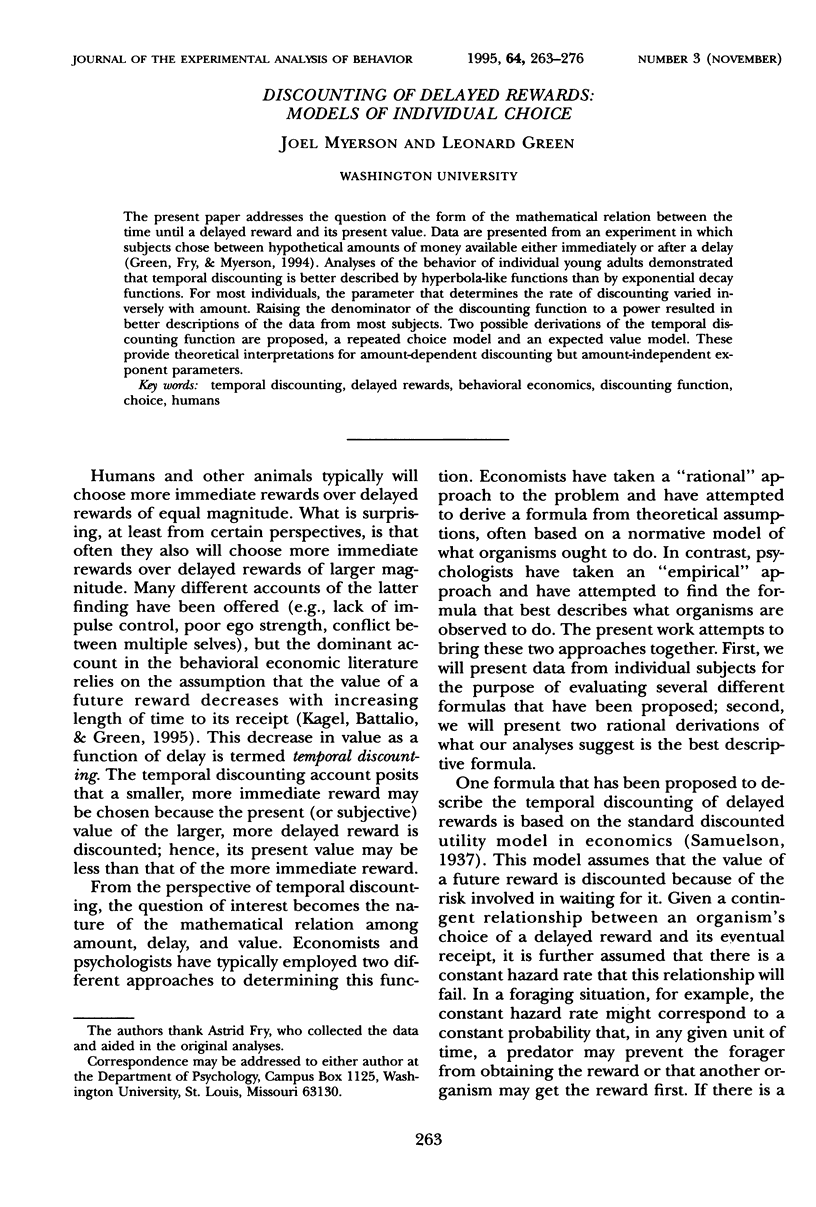
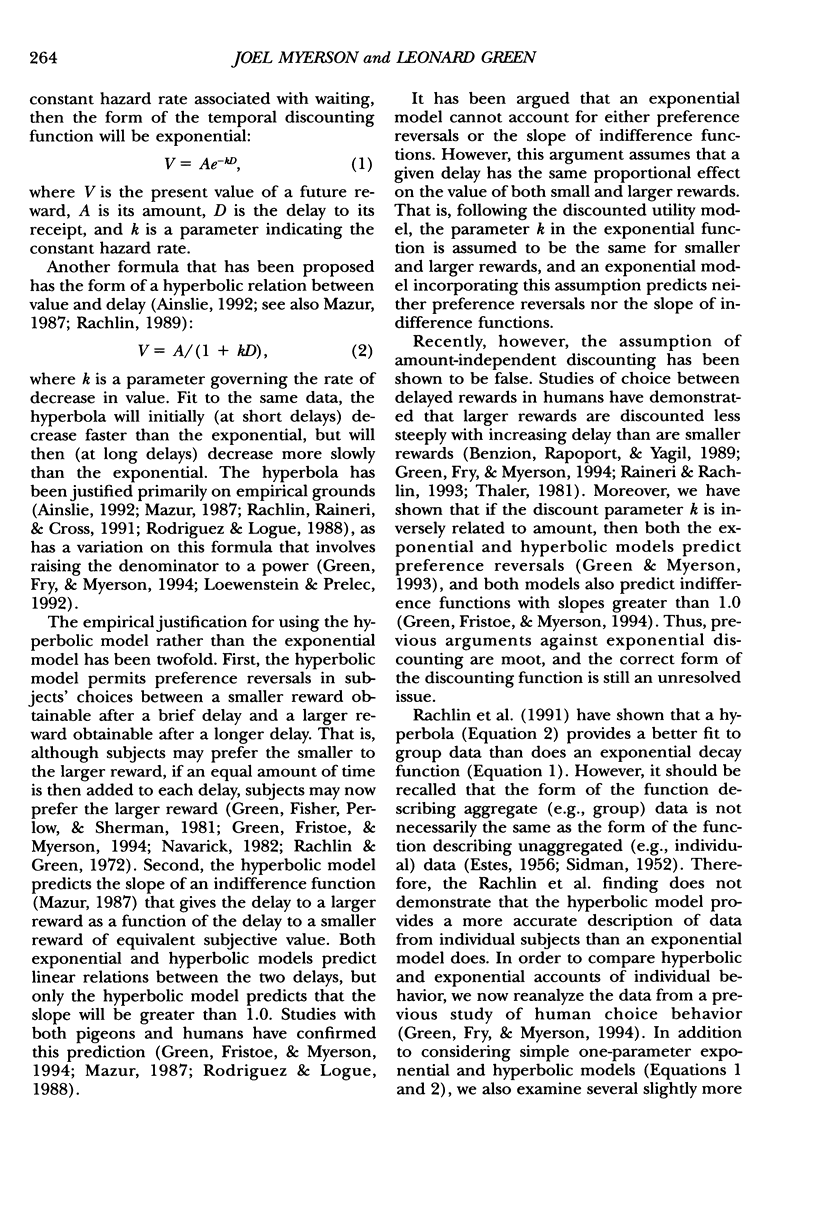
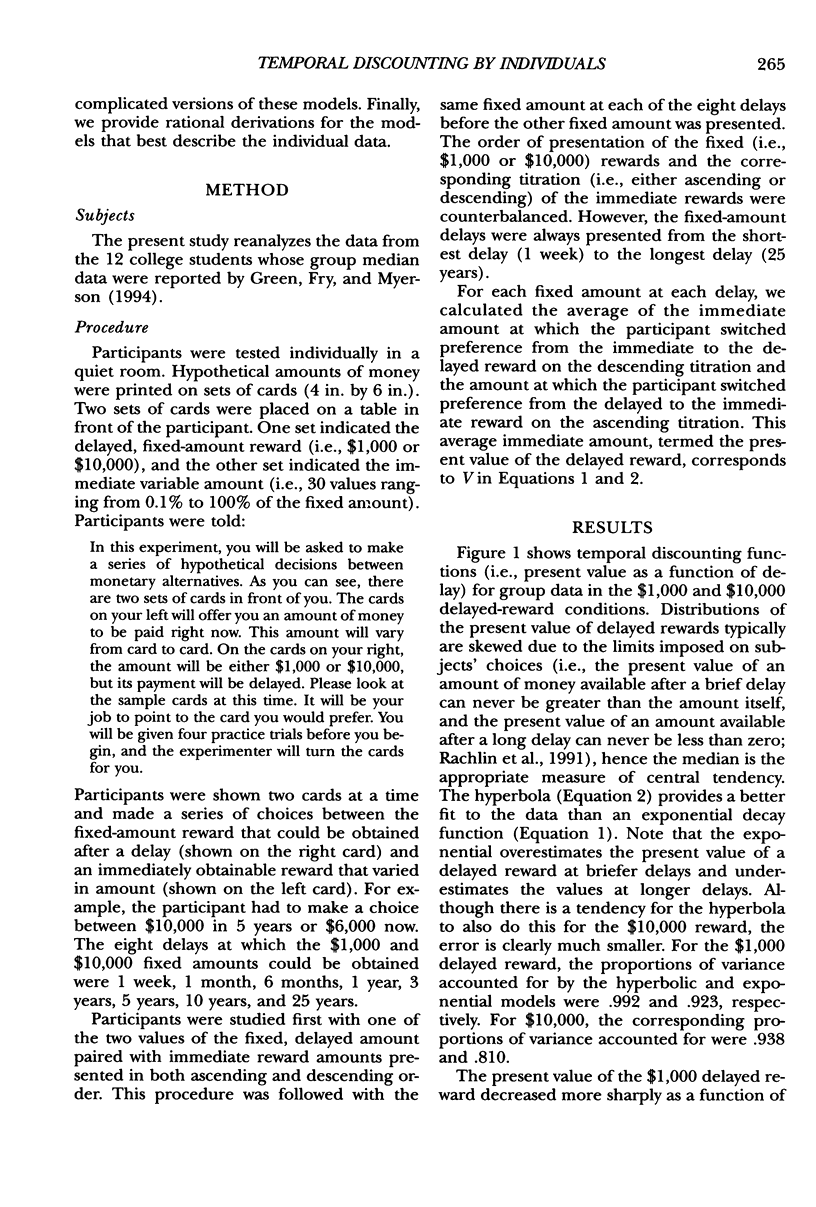
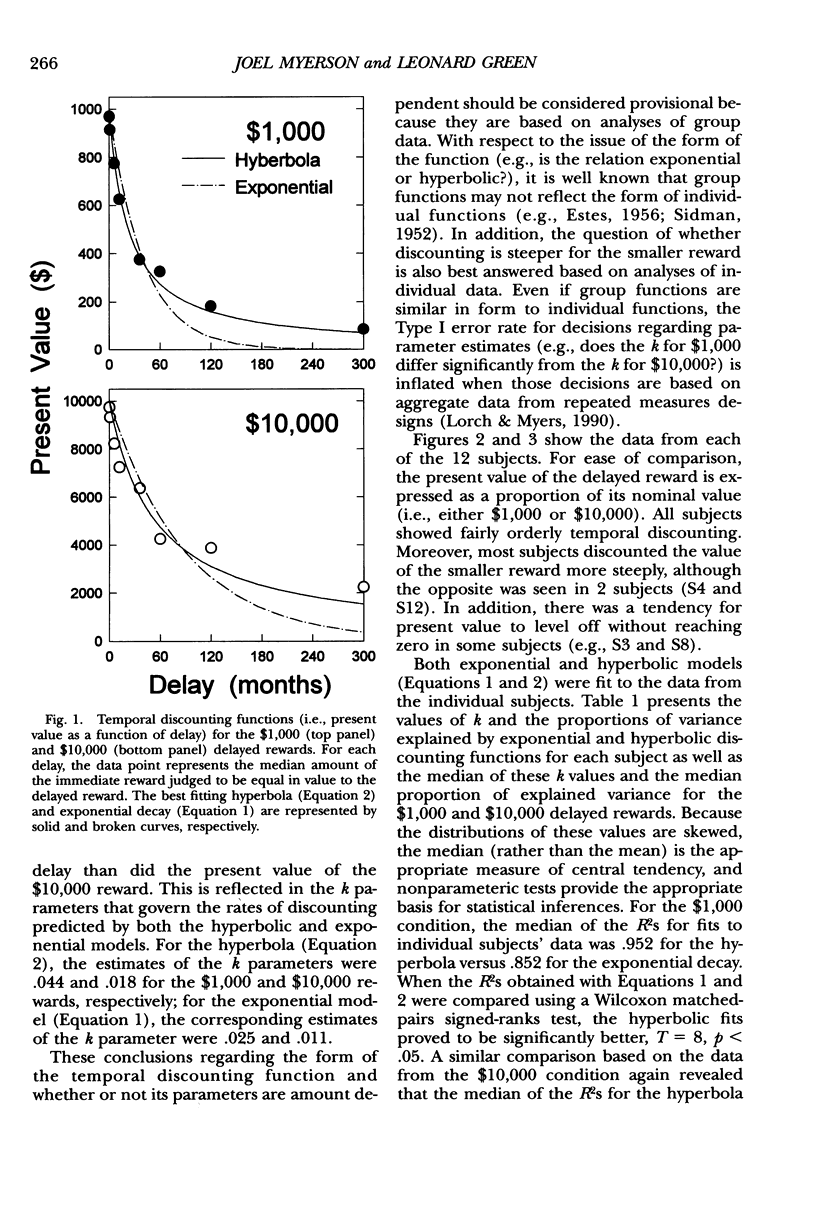
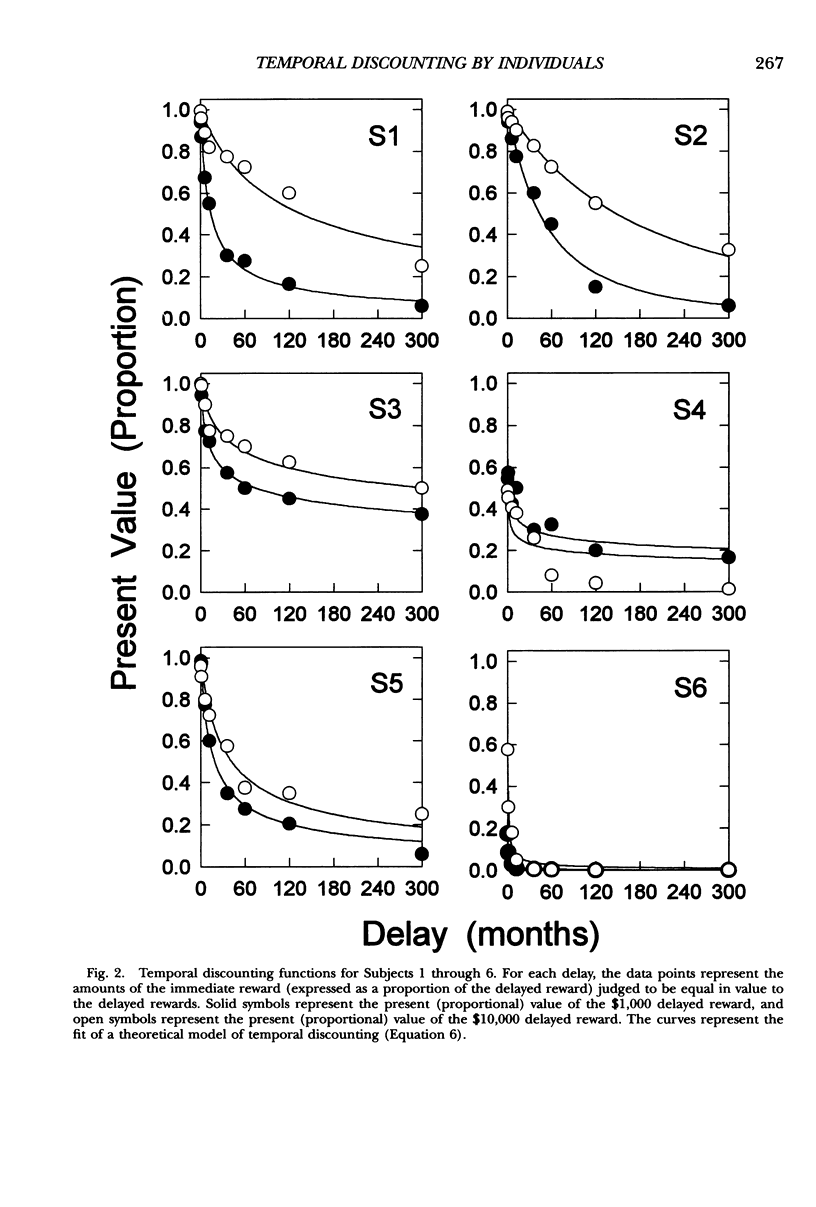
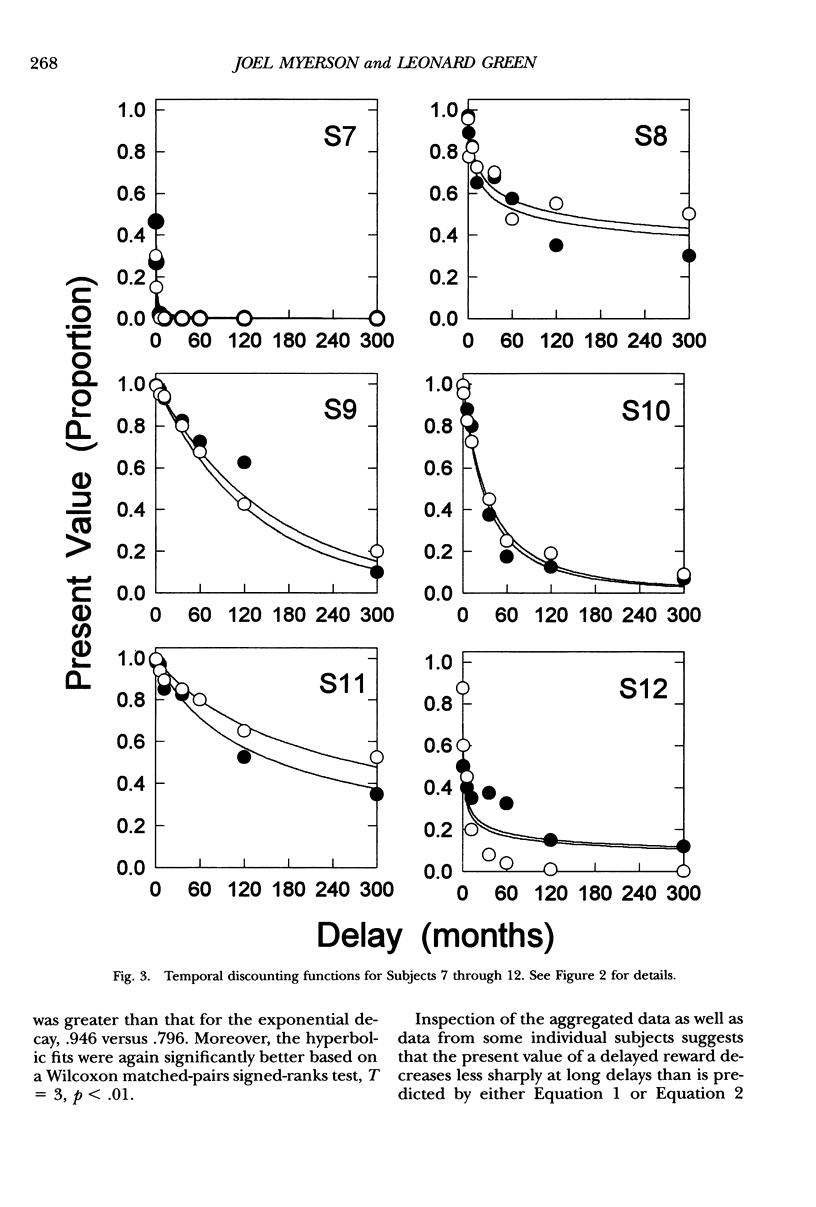
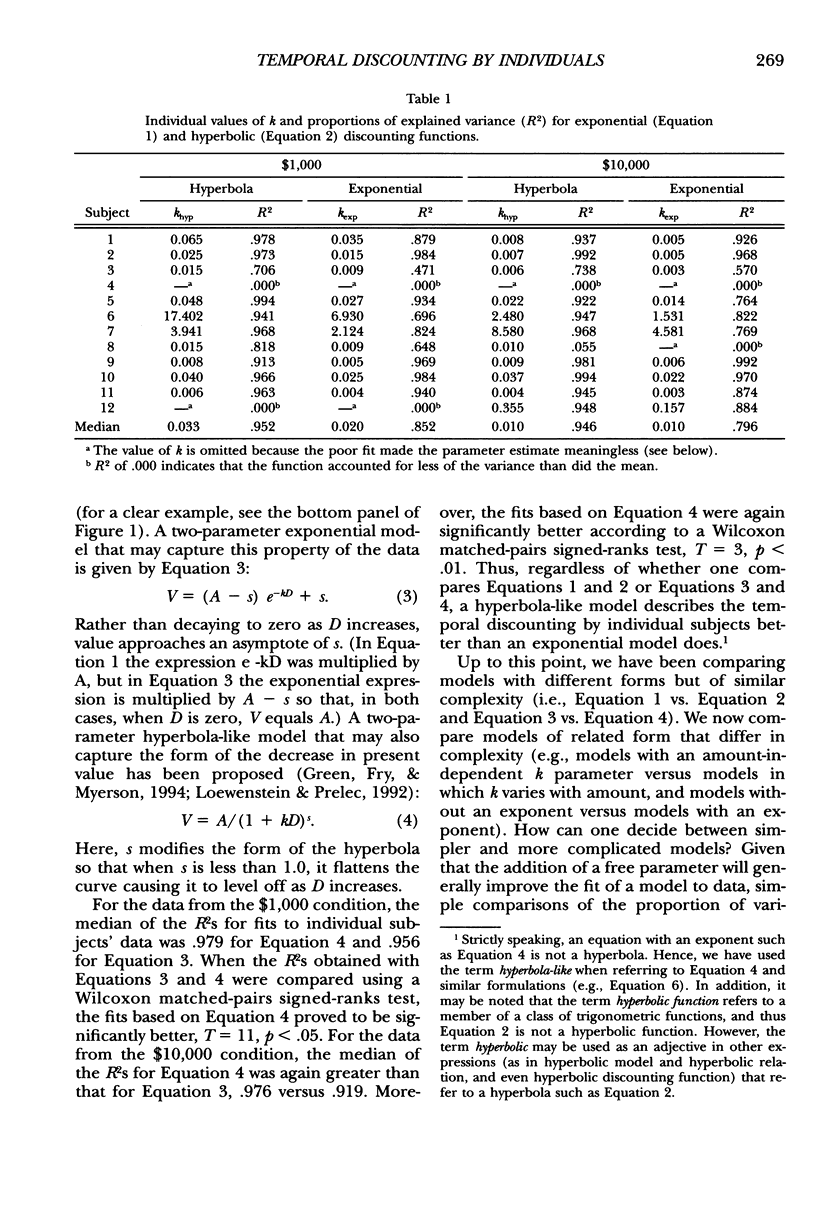
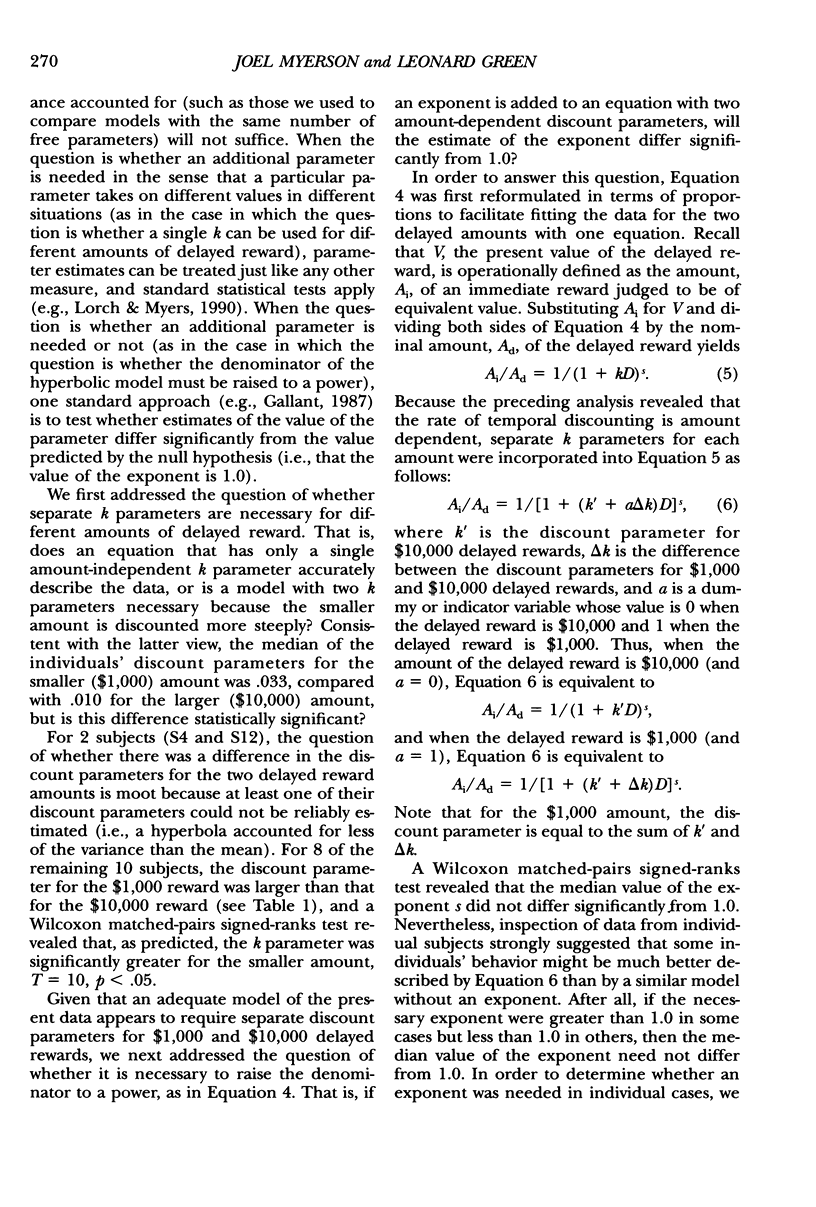
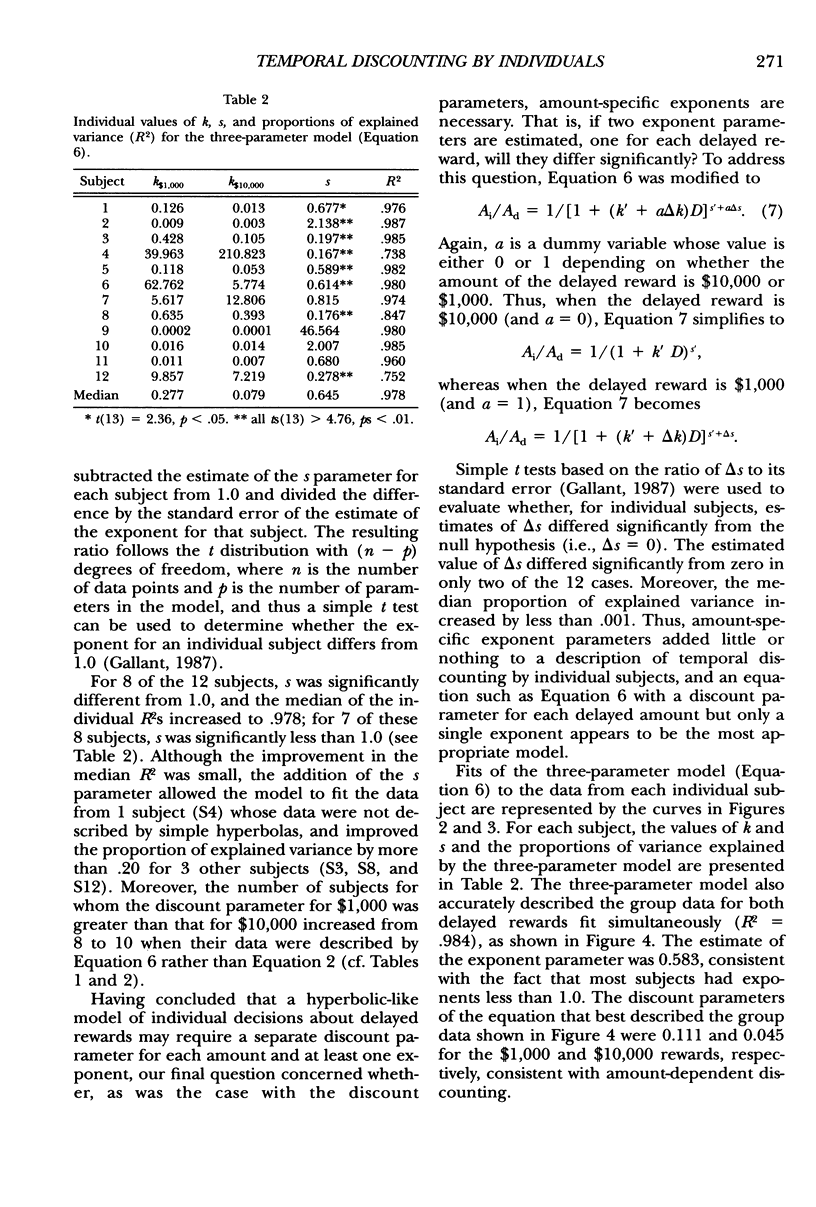
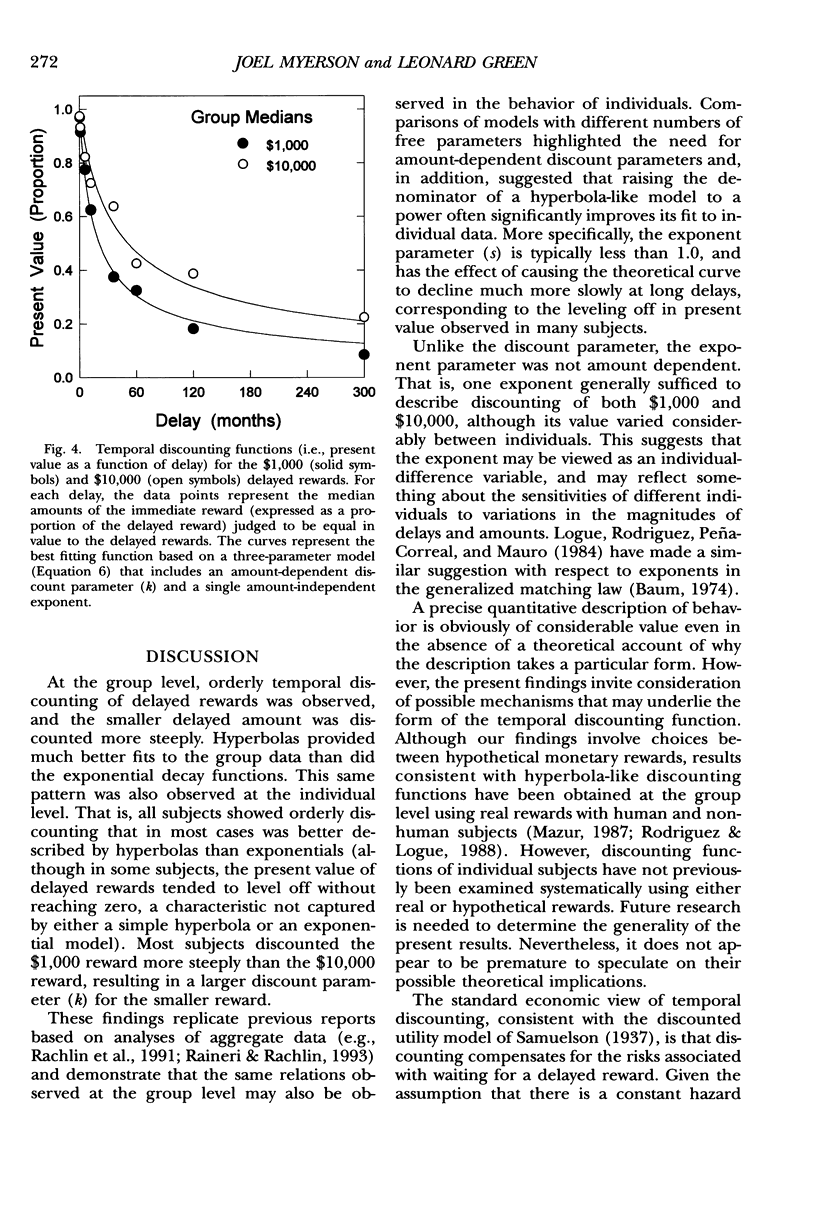
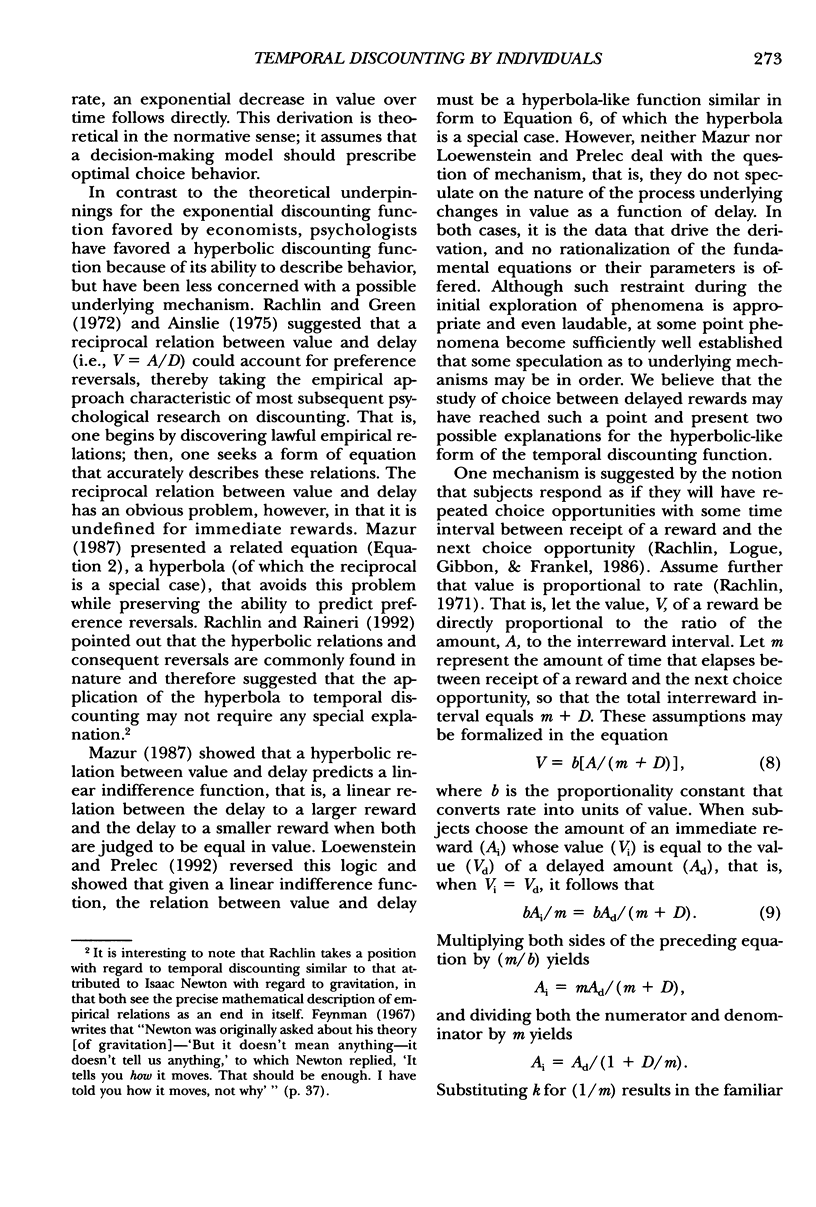
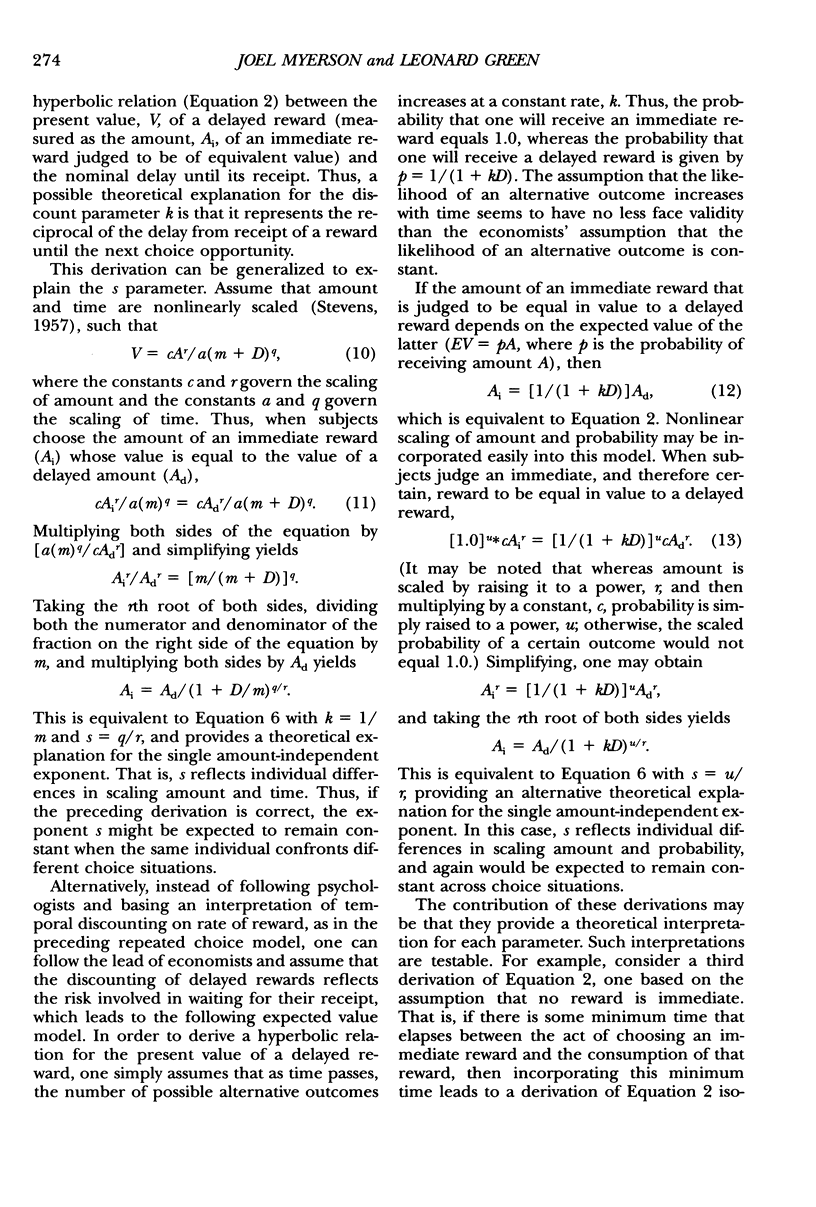
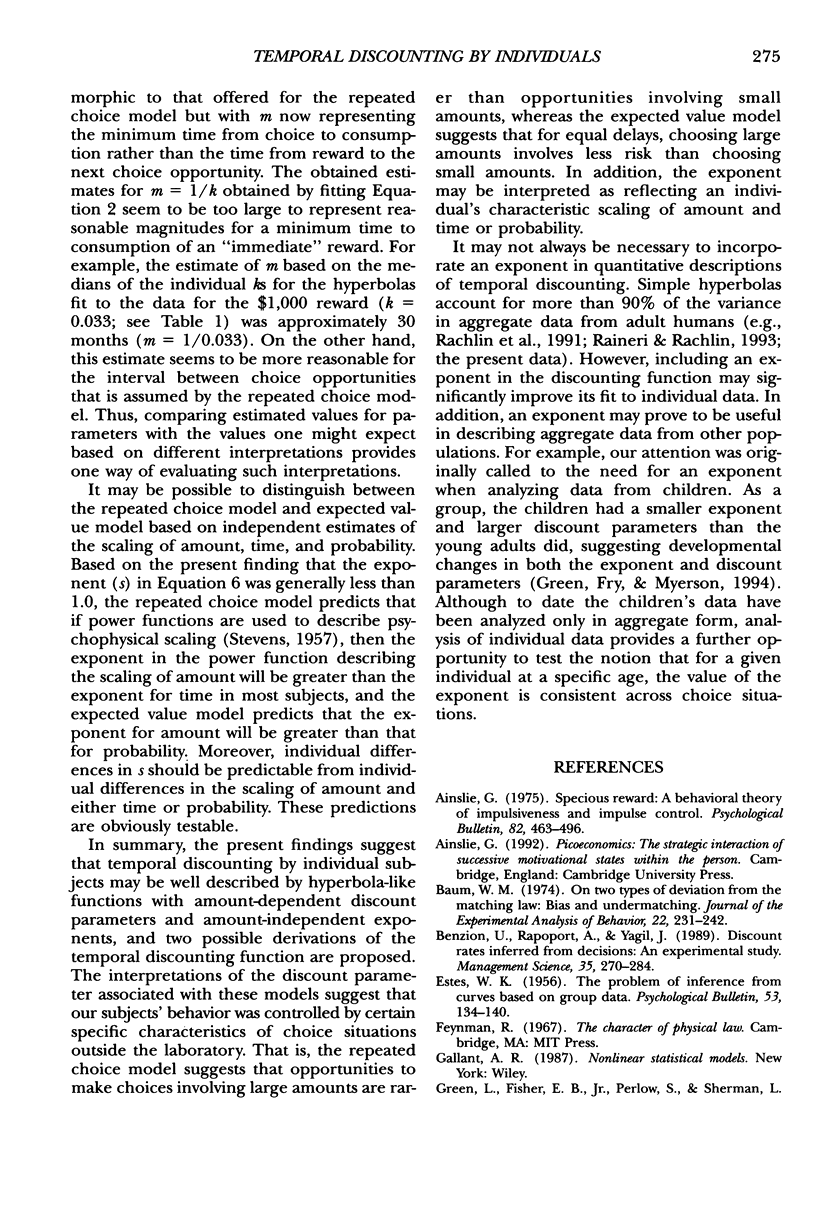
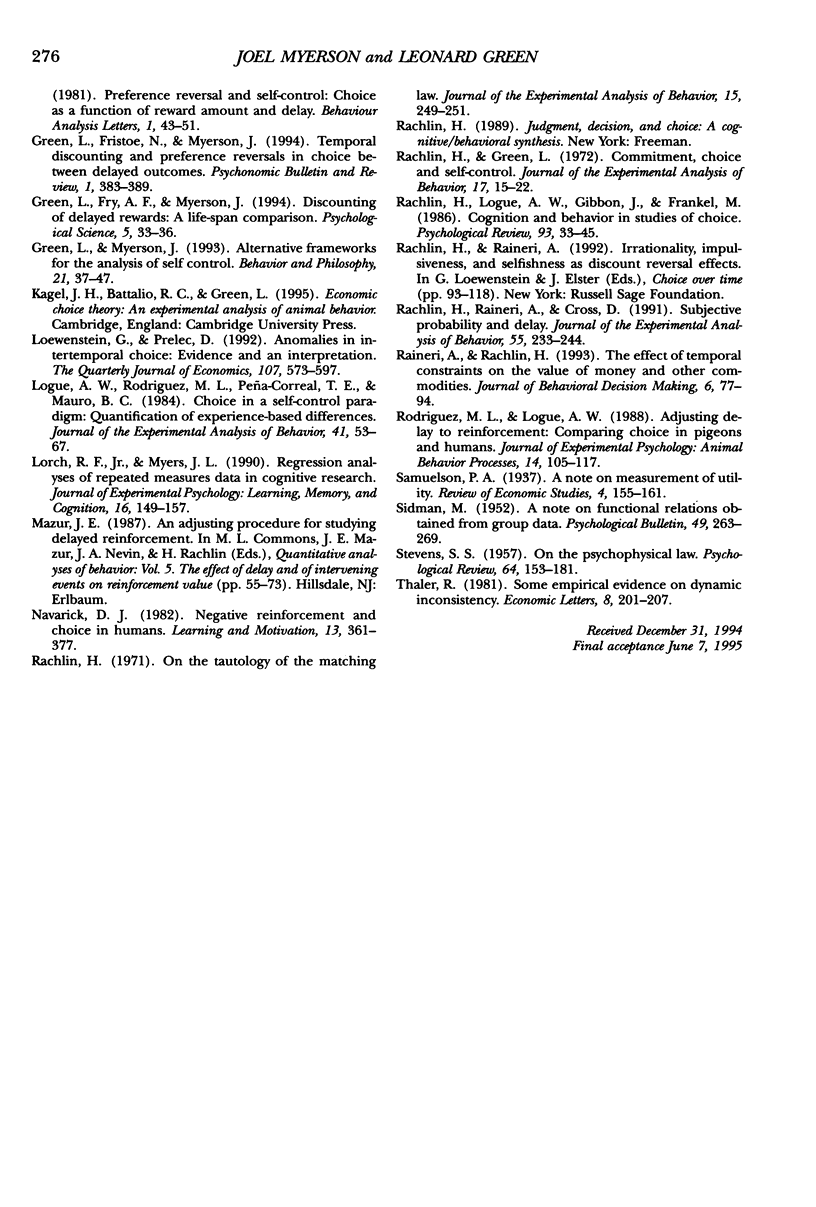
Selected References
These references are in PubMed. This may not be the complete list of references from this article.
- Ainslie G. Specious reward: a behavioral theory of impulsiveness and impulse control. Psychol Bull. 1975 Jul;82(4):463–496. doi: 10.1037/h0076860. [DOI] [PubMed] [Google Scholar]
- Baum W. M. On two types of deviation from the matching law: bias and undermatching. J Exp Anal Behav. 1974 Jul;22(1):231–242. doi: 10.1901/jeab.1974.22-231. [DOI] [PMC free article] [PubMed] [Google Scholar]
- ESTES W. K. The problem of inference from curves based on group data. Psychol Bull. 1956 Mar;53(2):134–140. doi: 10.1037/h0045156. [DOI] [PubMed] [Google Scholar]
- Logue A. W., Rodriguez M. L., Peña-Correal T. E., Mauro B. C. Choice in a self-control paradigm: Quantification of experience-based differences. J Exp Anal Behav. 1984 Jan;41(1):53–67. doi: 10.1901/jeab.1984.41-53. [DOI] [PMC free article] [PubMed] [Google Scholar]
- Lorch R. F., Jr, Myers J. L. Regression analyses of repeated measures data in cognitive research. J Exp Psychol Learn Mem Cogn. 1990 Jan;16(1):149–157. doi: 10.1037//0278-7393.16.1.149. [DOI] [PubMed] [Google Scholar]
- Rachlin H., Green L. Commitment, choice and self-control. J Exp Anal Behav. 1972 Jan;17(1):15–22. doi: 10.1901/jeab.1972.17-15. [DOI] [PMC free article] [PubMed] [Google Scholar]
- Rachlin H. On the tautology of the matching law. J Exp Anal Behav. 1971 Mar;15(2):249–251. doi: 10.1901/jeab.1971.15-249. [DOI] [PMC free article] [PubMed] [Google Scholar]
- Rachlin H., Raineri A., Cross D. Subjective probability and delay. J Exp Anal Behav. 1991 Mar;55(2):233–244. doi: 10.1901/jeab.1991.55-233. [DOI] [PMC free article] [PubMed] [Google Scholar]
- Rodriguez M. L., Logue A. W. Adjusting delay to reinforcement: comparing choice in pigeons and humans. J Exp Psychol Anim Behav Process. 1988 Jan;14(1):105–117. [PubMed] [Google Scholar]
- SIDMAN M. A note on functional relations obtained from group data. Psychol Bull. 1952 May;49(3):263–269. doi: 10.1037/h0063643. [DOI] [PubMed] [Google Scholar]
- STEVENS S. S. On the psychophysical law. Psychol Rev. 1957 May;64(3):153–181. doi: 10.1037/h0046162. [DOI] [PubMed] [Google Scholar]


